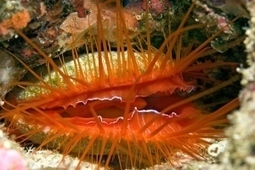One ant species in the Sahara Desert is covered by a silvery sheen of body hair that acts as a wearable sun shield for the creatures, a new study finds. The silvery hairs completely reflect the light like mirrors, preventing the ants from absorbing too much heat. That may help to explain how the Saharan silver ants can stay cool when temperatures in the arid region reach a blistering 122 degrees Fahrenheit (50 degrees Celsisus).
Research and publish the best content.
Get Started for FREE
Sign up with Facebook Sign up with X
I don't have a Facebook or a X account
Already have an account: Login
 Your new post is loading... Your new post is loading...
 Your new post is loading... Your new post is loading...
|
|















